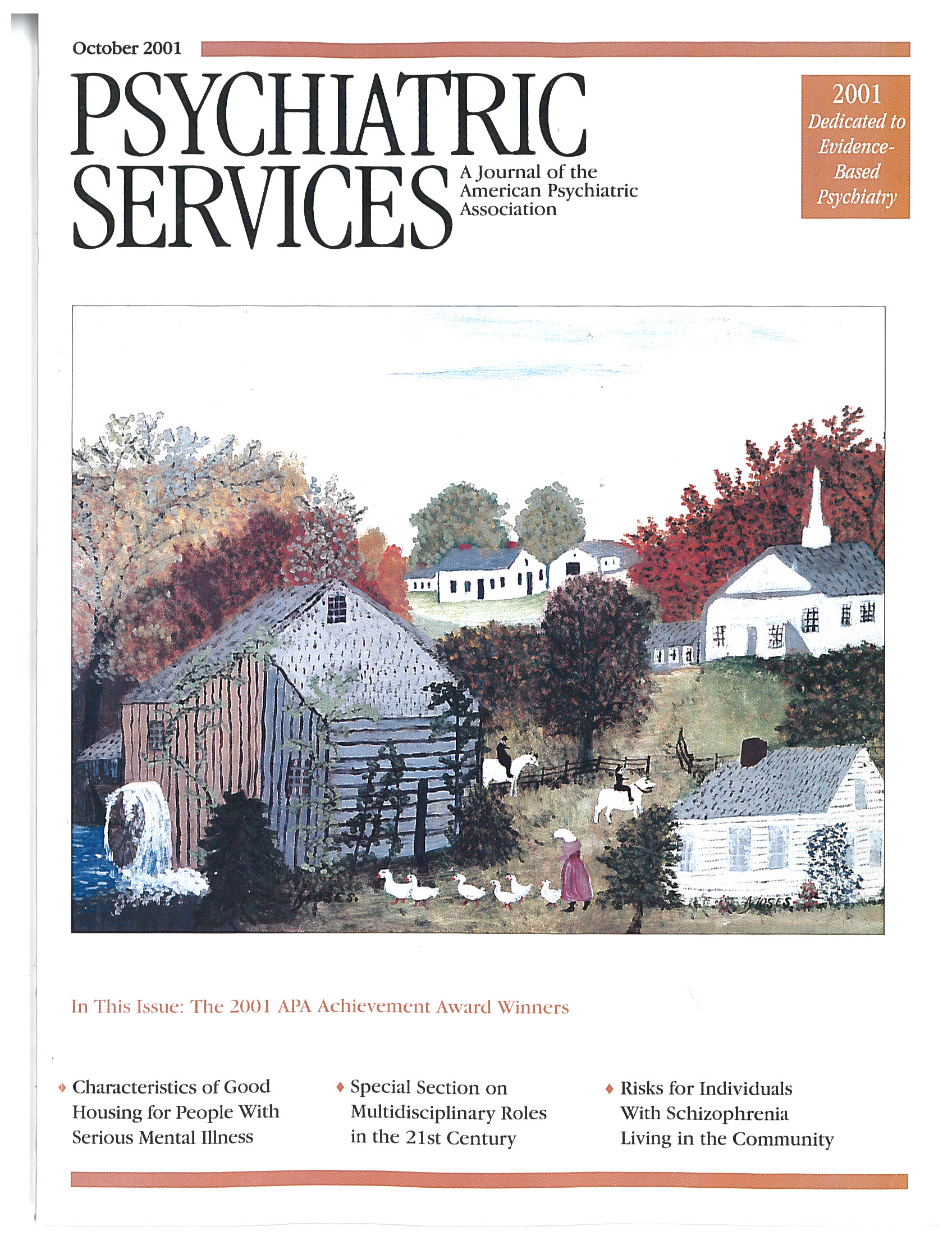Internet Addiction Disorder Among Clients of a Virtual Clinic
As the Internet increasingly becomes part of our lives, Internet addiction disorder has received much attention. Internet addicts may withdraw from social and interpersonal interactions other than those on the Internet. Their family relationships and academic or occupational functioning may deteriorate. Several withdrawal symptoms have been identified, including nervousness, agitation, and aggression, as well as an addiction syndrome that includes the presence of withdrawal symptoms, increasing tolerance, and loss of control (1). A high rate of comorbid mental disorders has also been reported, especially depressive symptoms and social impairment (2,3).
We report the results of a survey to determine the prevalence of Internet addiction disorder among visitors to a virtual mental health clinic where 100 volunteer mental health professionals provide, at no charge, online answers to visitors' questions about mental problems (4). We hypothesized that visitors who had a comorbid mental health problem would have a higher risk of developing Internet addiction disorder.
The survey was conducted from May to October 2000. During the study period all visitors to the virtual clinic completed Young's Internet addiction disorder questionnaire, a brief seven-item instrument that adapts DSM-IV criteria for pathological gambling (5). A total of 251 clients completed the questionnaire. The mean±SD age of the clients was 25.04±6.19 years, with a range of 14 to 44 years. Most were female (67 percent) and single (84 percent). Most had an education beyond the college level (63 percent), and about a third (36 percent) were students. A majority (56 percent) reported that they had never visited a real mental health clinic.
On the basis of the questions visitors asked, the most common impending diagnosis was anxiety disorder (29 percent), followed by mood disorder (24 percent). The survey responses indicated that 26 percent had an impending substance use disorder. Among the 251 clients, 38 (15 percent) met criteria for Internet addiction disorder. Clients who met the criteria did not differ significantly from those who did not in age, gender, education, marital status, occupation, or impending diagnosis. However, the rate of comorbid substance use disorder was significantly higher among clients who met the criteria for Internet addiction disorder than among those who did not (58 percent versus 26 percent; Fisher's exact test, two-tailed, p=.03).
Our survey is the first to document the prevalence of Internet addiction disorder among visitors to a virtual mental health clinic. The high prevalence we found needs attention. Few of the survey respondents raised the issue of Internet addiction as a problem in their subsequent interactions with the online mental health professionals, although some reported many failed attempts to cut down on their time spent online, and some reported feeling depressed, nervous, and agitated when they were not online. Either these persons did not recognize the problem or they did not know how to ask for help. Their addiction to the Internet may complicate their existing mental problems (1). They may benefit from a clinician's actively inquiring about their Internet use and providing them with education to help them gain insight into problematic use.
The high prevalence of comorbid substance use disorders, nearly 60 percent, also needs attention. This finding is compatible with those of previous studies. Shapira and colleagues (4) reported that 60 percent of the 20 persons in their sample who had Internet addiction disorder also had a substance use disorder. Young (5) reported a rate of 52 percent among 396 subjects.
Activities on the Internet may lead to dopamine release in the nucleus accumbens, which is thought to be an important neurochemical event in the development of addiction. People who lack self-esteem are more likely to become Internet addicts, just as they are more likely to use drugs or alcohol (1). It is essential to gain a better understanding of underlying factors in Internet addiction disorder, including how personality traits, family dynamics, psychosocial factors, and communication skills influence the way people use the Internet.
The authors are affiliated with the department of psychiatry at Yu-Li Veterans Hospital in Taiwan.
1. Mitchell P: Internet addiction: a genuine diagnosis or not? Lancet 355:632, 2000Google Scholar
2. Kraut R, Patterson M, Lundmark V, et al: Internet paradox: a social technology that reduces social involvement and psychological well-being? American Psychologist 53:1017-1031, 1998Google Scholar
3. Shapira NA, Goldsmith TD, Keck PE Jr, et al: Psychiatric features of individuals with problematic Internet use. Journal of Affective Disorders 57:267-272, 2000Crossref, Medline, Google Scholar
4. Bai Y-M, Lin C-C, Chen J-Y, et al: The characteristic differences between clients of virtual and real psychiatric clinics [letter]. American Journal of Psychiatry 158:1160-1161, 2001Link, Google Scholar
5. Young KS: Internet addiction: the emergence of a new clinical disorder. Presented at the annual meeting of the American Psychological Association, Toronto, Canada, Aug 1996Google Scholar



